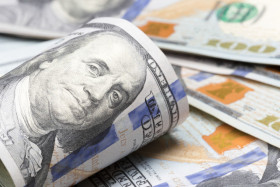The US dollar is trading sideways against several major currencies, suggesting that investors are waiting to see the fallout from an announcement that the White House is raising tariffs on $200 billion on Chinese imports by the end of the week. With data light on the calendar in the coming days, traders are focused primarily on geopolitical events surrounding the buck.
Recently, President Donald Trump tweeted that the US government would be increasing tariffs from 10% to 25% on more than $200 billion worth of Chinese goods by Friday. Also, another $325 billion of additional goods would be âshortlyâ introduced. He tweeted:
For 10 months, China has been paying Tariffs to the USA of 25% on 50 Billion Dollars of High Tech, and 10% on 200 Billion Dollars of other goods. These payments are partially responsible for our great economic results. The 10% will go up to 25% on Friday. 325 Billions Dollars of additional goods sent to us by China remain untaxed, but will be shortly, at a rate of 25%. The Tariffs paid to the USA have had little impact on product cost, mostly borne by China. The Trade Deal with China continues, but too slowly, as they attempt to renegotiate. No!
The move blindsided the market, considering the number of reports in recent weeks that suggested Washington and Beijing were on the cusp of reaching a new trade agreement. As recently as March, it had been reported that President Trump and President Xi Jinping would soon be signing a deal that would ratify a new agreement between the worldâs two largest economies.
US-China trade talks are expected to continue on Tuesday. A delegation of Chinese negotiators will be in Washington, a meeting which could give some hint as to the state of negotiations.
Once the markets opened on Monday, equities plunged and the leading US stock indexes were down by as much as 1%. Asian markets also cratered on the news.
Analysts warn that the losses would have been much steeper if it were not for the strong April jobs report that showed a gain of 263,000 jobs and a 49-year-low unemployment rate of 3.6% â anything under 4% is considered full employment by most economists.
On the data front, investors will mostly comb through inflation data this week, including the producer price index (PPI), inflation, consumer inflation expectations, and import and export prices.
The USD/CAD currency pair was relatively flat at 1.3428, from an opening of 1.3422, at 18:11 GMT on Monday. The EUR/USD was also trading sideways at 1.1207, from an opening of 1.1202.
If you have any questions, comments, or opinions regarding the US Dollar, feel free to post them using the commentary form below.
